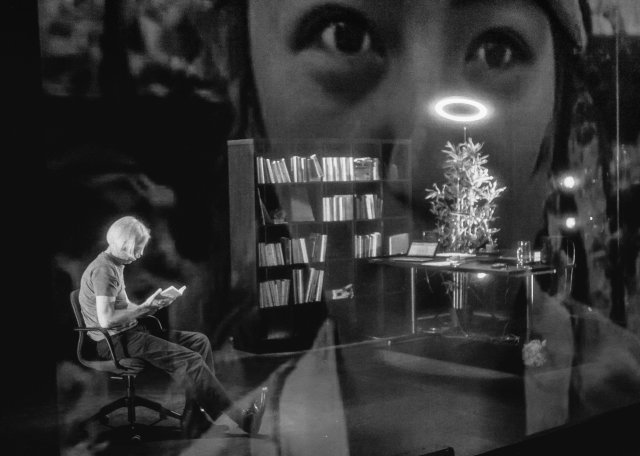Is the old poet’s room still needed when the ones and zeros rule?
Foto: © Carla Chable de la Héronnière
Years before the company Open AI caused a sensation with its ChatGPT program, a minimalist website provided the most impressive example of the power of artificial intelligence. Friends and colleagues sent out the link, and new acquaintances pulled out their smartphones at parties to present the site. Anyone who met someone who didn’t know them yet could be sure of their interest. Which wasn’t because there was anything spectacular to discover. On the contrary, to this day only the image of a face can be seen on it. And if the user reloads the page, you see a different one. That’s all.
What’s astonishing and irritating about “thispersondoesnotexist.com” is that all the people in the pictures were never alive. A program trained on huge amounts of portraits generates completely new faces in the background.
nd.Kompakt – our daily newsletter

Our daily newsletter nd.Compact brings order to the news madness. Every day you will receive an overview of the most exciting stories from the world editorial staff. Get your free subscription here.
This automatic image generation is now available for everything: interior furnishings, cartoon characters, ceramics, satellite images of cities, chairs, cars and sneakers. The fake people still retain their fascination today, which has to do with a special feature of the medium of photography. When we look at a portrait, we confuse the image with the person. Nobody says: This is a photo of Thomas. Instead, you’re sure: That’s Thomas! So the picture is identical to what it shows. The French philosopher Roland Barthes described photography not as a technique, but as magic.
And these days, the unshakable belief in the truth of photography meets the limitless feasibility of fakery. An extremely interesting artistic playing field opens up here for the Canadian director Christian Lapointe and the English playwright Martin Crimp. Crimp has been one of the most successful contemporary dramatists in Great Britain since the 1990s and is also well known in Germany. As part of the International New Drama Festival at the Berlin Schaubühne, he is now on stage in the production “Not One of These People”.
Next to him, changing projections of artificially generated faces can be seen. He puts sentences into their mouths, reads out what these 299 non-humans think, where they stand politically, what they believe in, what they hope for, what they regret, how they got fired, what happened when the old neighbor died . With a few exceptions, there are no cross-connections from these statements. Crimp lets them each speak on a newly chosen topic.
Some statements are quite funny, others could be shocking if the voices were those of the people themselves. But as it is, these faces seem to have moved further into the distance, even as the corners of their mouths begin to twitch and they soon finally seem to be telling their own stories, lip-syncing to Crimp’s lecture. The more elaborate and complex the animation, the stranger and lifeless they appear. They resemble puppets more than people, or perhaps poor actors, those who never fill a character because they lack the skill to hide their own personality.
At the end of the 100-minute evening, Crimp enters a naturalistically furnished apartment. Clothes rack, desk, bookshelf. He waters the houseplant, sits at the table, writes something down or draws, but it’s not exactly clear. Then he crumples up the sheet, picks up a new one, and finally prints something out.
Here we observe the writer at work, writing the texts we heard previously. Lapointe and Crimp are clearly more interested in the production process of literature and theater than in the phenomenology of artificially created images. They reflect the process of invention and the relationships between character, actor and author. They ignore the much more interesting questions that the artificially created images raise, such as those about a definition of truth, about the properties of an image or the minimum requirements for the term human. That’s unfortunate; more could be achieved with this experimental setup.
Become a member of the nd.Genossenschaft!

Since January 1, 2022, the »nd« will be published as an independent left-wing newspaper owned by the staff and readers. Be there and support media diversity and visible left-wing positions as a cooperative member. Fill out the membership application now.
More information on www.dasnd.de/genossenschaft
sbobet88 link sbobet judi bola online judi bola online
